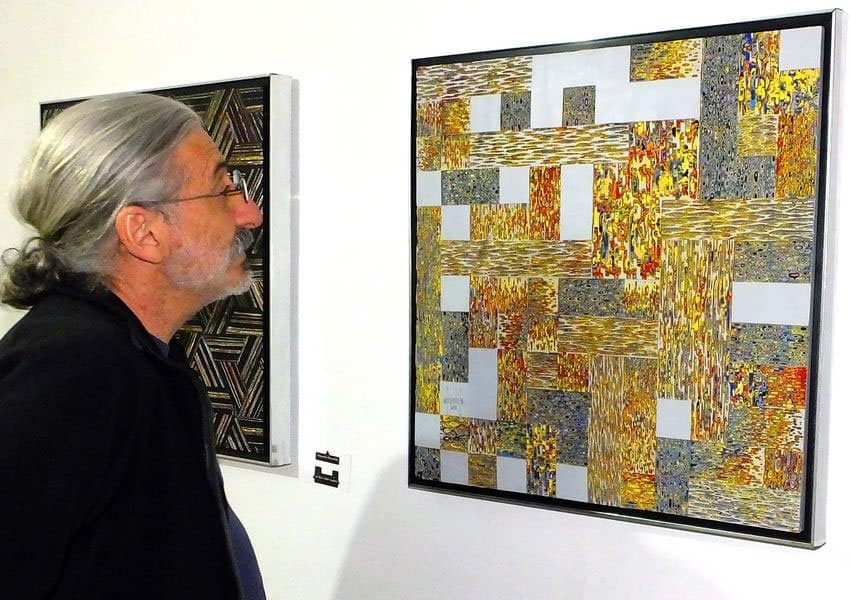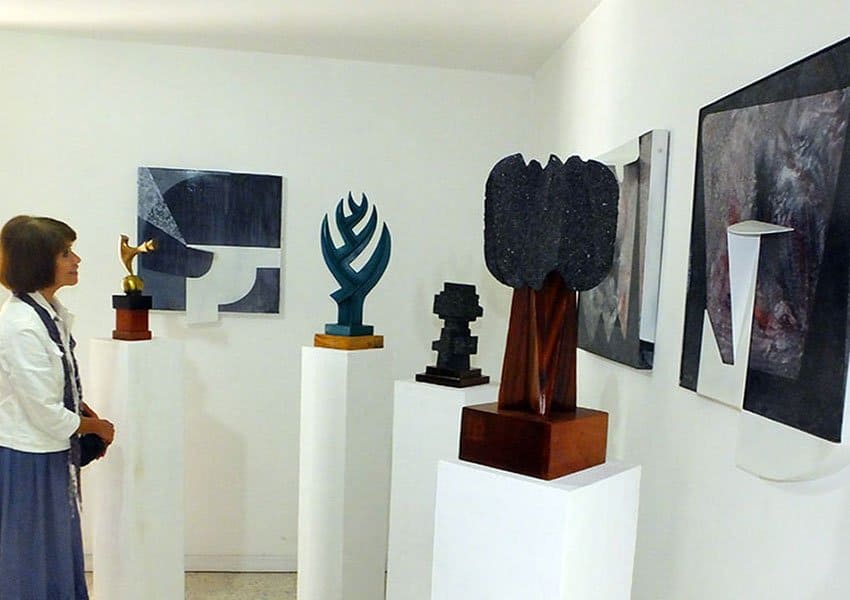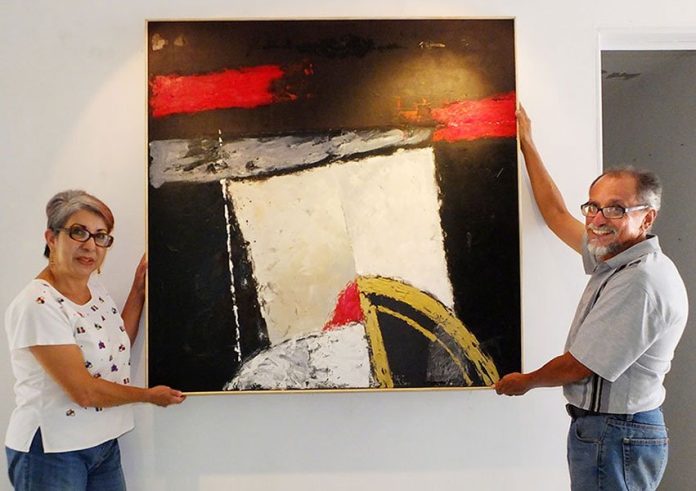Architect José “Pepe” Olivares and his wife Rosalía have been in love with what they call “non-figurative art” for many years.
During that time they and various like-minded friends worked hard to promote the establishment of an abstract art gallery somewhere in western Mexico, but to no avail.
“Then one day,” they told me, “we stood together inside our home and looked around us. Our children had all grown up and gone off to raise families of their own. Our house, which is very large, with many rooms, was now empty. Why look elsewhere, we thought: let’s start our own art gallery right here.”
So in early 2017, Jalisco’s Center for the Study and Diffusion of Non-Figurative Art — or CIANF — was born in a private home in the rustic community of Pinar de la Venta, located at the edge of the huge Primavera Forest, which lies immediately west of Guadalajara, Mexico’s second-largest city.
The center began to attract attention in May of 2017 when it hosted an exhibit of archive paintings loaned by Mexico’s most prestigious institute of abstract art, the Museo de Arte Abstracto Manuel Felguérez in the city of Zacatecas.

“We had works by famous artists like Felguérez himself, the Catalans Josep Guinovart and Jordi Boldó, as well as the creator of Guadalajara’s Los Cubitos monument, sculptor Fernando González Gortázar,” I was told by the Olivares. “People flocked to Pinar de la Venta to see these masterpieces and the TV and newspapers called it a great success.”
Intrigued, I popped in twice to observe the art lessons maestro Pepe Olivares gives to children and adults every week. That’s where I discovered that, like Picasso, this teacher is just as talented in depicting realism as abstraction.
Commented Olivares, “I often start with drawing or painting recognizable subjects like flowers or a landscape and after my students have mastered these basic techniques, we move on to removing elements until only form and color remain.”
I asked one of the adult students, Ana Rosa, how she liked the class. “For me, this is therapy. I forget my children, I forget all my troubles and I relax totally. I really look forward — with great enthusiasm — to coming here every Thursday. I just wish I could do this twice a week.”
After the class, I sat down with Olivares and asked him how he became interested in art. He immediately told me that his story was “not at all unusual.”
“In my childhood,” Pepe told me, “matches were used a lot, especially for lighting the stove. Well, I was maybe four years old and my father showed me a matchbox which had a reproduction of a famous work of art on its cover. These were called ‘Clásicos de Lujo la Central’ and my father gave me a challenge: ‘I bet you can’t draw this,’ he said and I replied, ‘Oh yes, I can!’ Right there was my first artistic awakening, you could say.”

I told Pepe that this didn’t seem “usual” to me one bit, but he replied that he had spoken to many of Jalisco’s artists “and most of them told me they got going in exactly the same way, with those matchbook covers.”
Pepe’s gusto for drawing stayed with him and he recalls, “when I was in third grade, they asked us to draw a picture of Miguel Hidalgo. I did mine on a big sheet of pasteboard and I remember the pride I felt at succeeding to do this, even though I suspect my drawing must have been pretty ugly. But with that, I decided that art was what I wanted to do for the rest of my life. And from then on, I drew and drew. This is why I am involved in giving painting classes to children here, because this is when a vocation can be born.”
Pepe Olivares’ father was practical enough to convince him he should take up architecture as a career, which he did at the University of Guadalajara. “Among my teachers,” he says, “were people like the German architect Hors Hartung, who knew a lot about pre-Hispanic architecture and also about modern abstract painters and sculptors.
“His classes were delightful! I learned a lot from him. We had a class with him called ‘Integración Plástica’ which involved aesthetic games, playing with volume. We were not trying to represent anything or to copy anything from nature; it was all about forming pleasing shapes. It was an exercise in abstraction, working only with forms and colors, and it was here that I got my introduction to abstract art.”
Talking to Pepe Olivares brought me back to the wonderful works of geometric art I had seen during my years in Arabia. When religious leaders forbade them to draw images of any living thing, Islamic artists poured their creativity into the development of arabesque decoration and transformed writing into a new art form, Arabic calligraphy.
In these cases, restrictions imposed from without led creative minds in new directions. Abstraction, it seemed to me, was rather similar, but the restrictions are imposed by the artist.
[soliloquy id="65504"]
In Netflix’s The Ministry of Time, the 17th-century Spanish painter Diego Velázquez is transported to our era. One day someone refers to him as “The greatest Spanish painter.” Velázquez replies, “I’m not the greatest. Picasso is . . . . When I’m looking at one of his paintings and some guy comes up saying, ‘look at those squiggles, my kid does better,’ I don’t know, I feel like I want to strangle him. What an ignoramus!
“Some painters do abstract because that’s all they know, but not Picasso! At 14 years of age, his paintings looked like photos. This is what I call The Picasso Theory: only the man who paints real life better than anybody else can then go ahead and do whatever he feels like.”
The center hosts exhibits, offers classes and workshops and is setting up a library “where people of all ages can learn about abstract art, do research and experiment with different techniques.” It also hosts visiting artists, such as Algerian abstract painter Ghislaine Thomas, who is preparing for an exhibit in Mérida, Yucatán, this coming January.
• To visit the center, call in advance at cell 333 616 6242. For more information see their Facebook page.
The writer has lived near Guadalajara, Jalisco, for more than 30 years and is the author of A Guide to West Mexico’s Guachimontones and Surrounding Area and co-author of Outdoors in Western Mexico. More of his writing can be found on his website.
